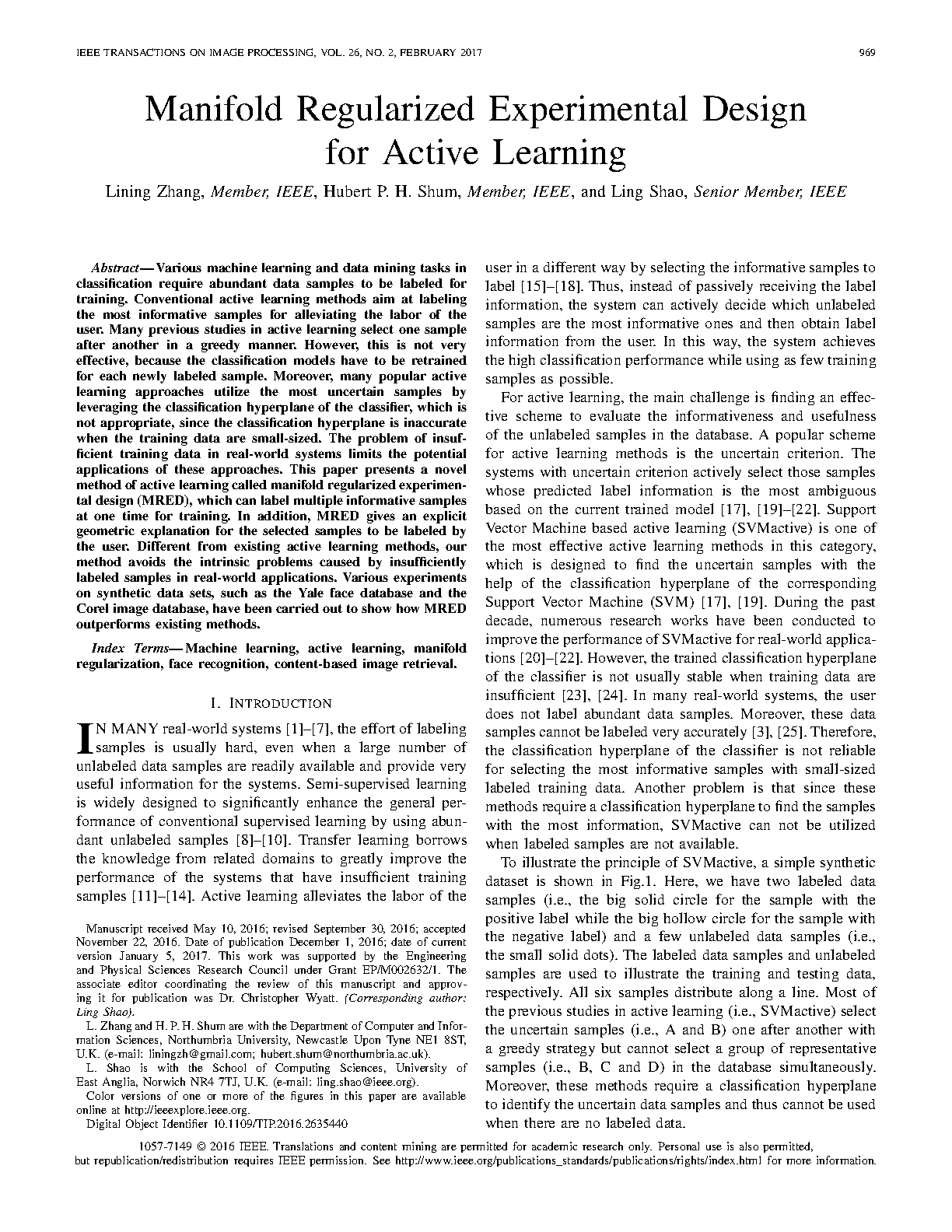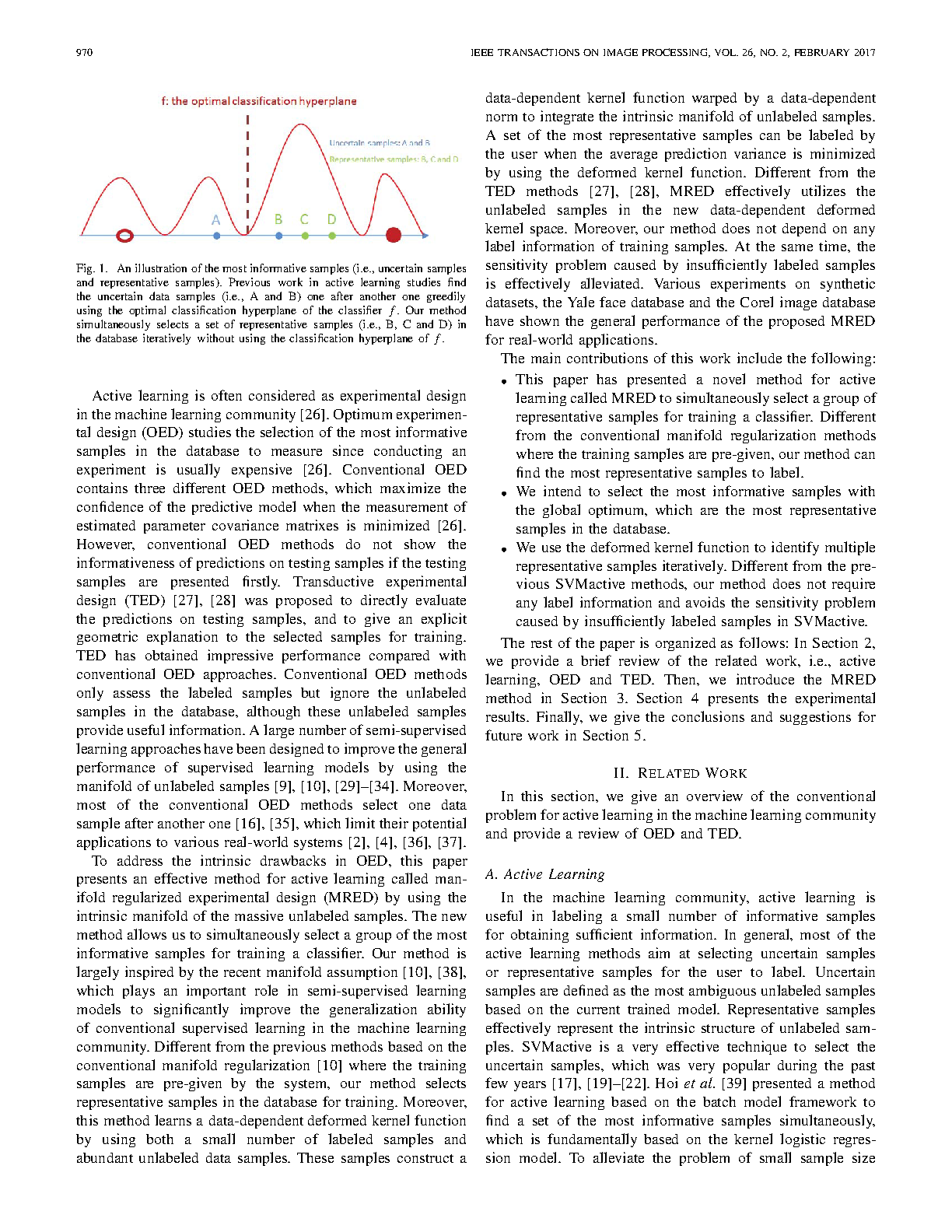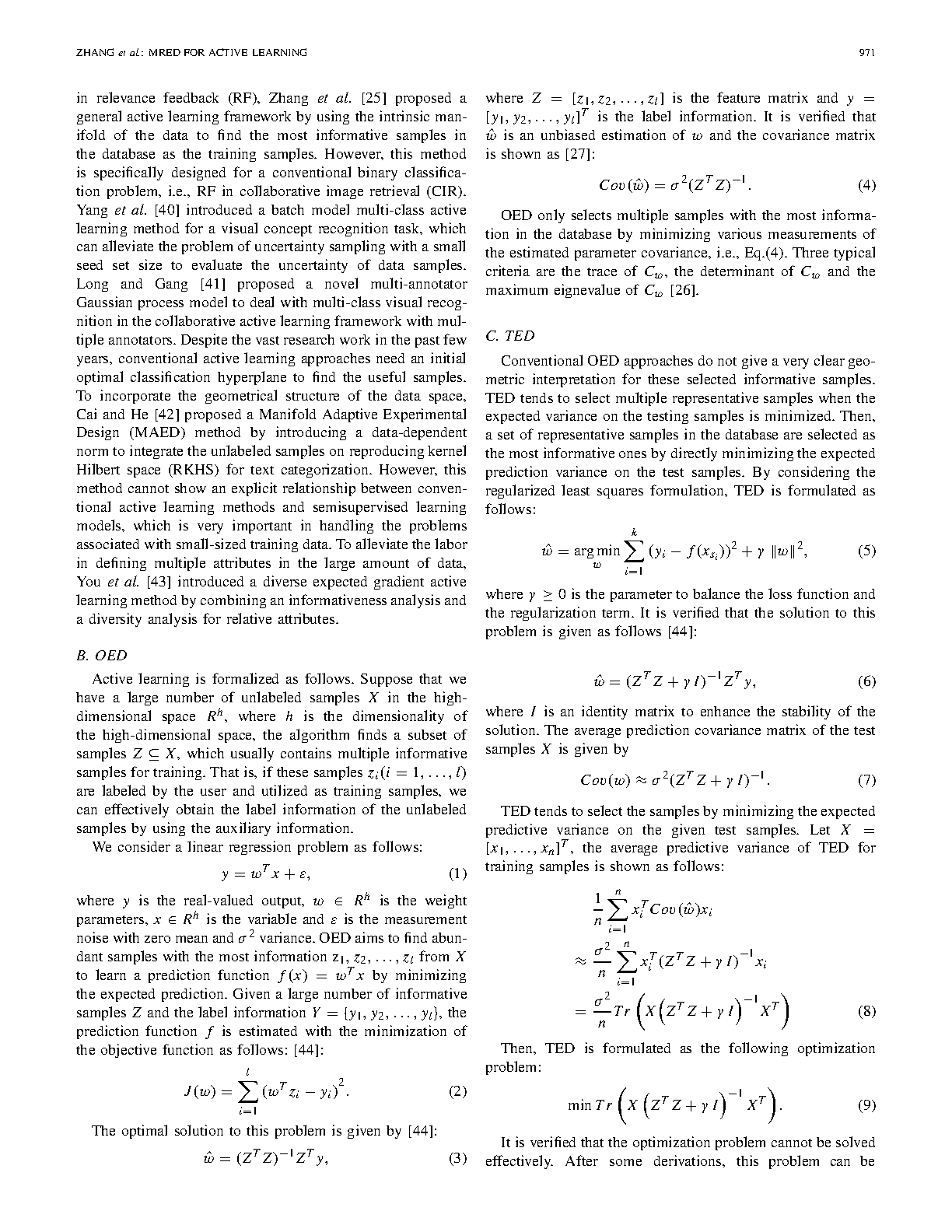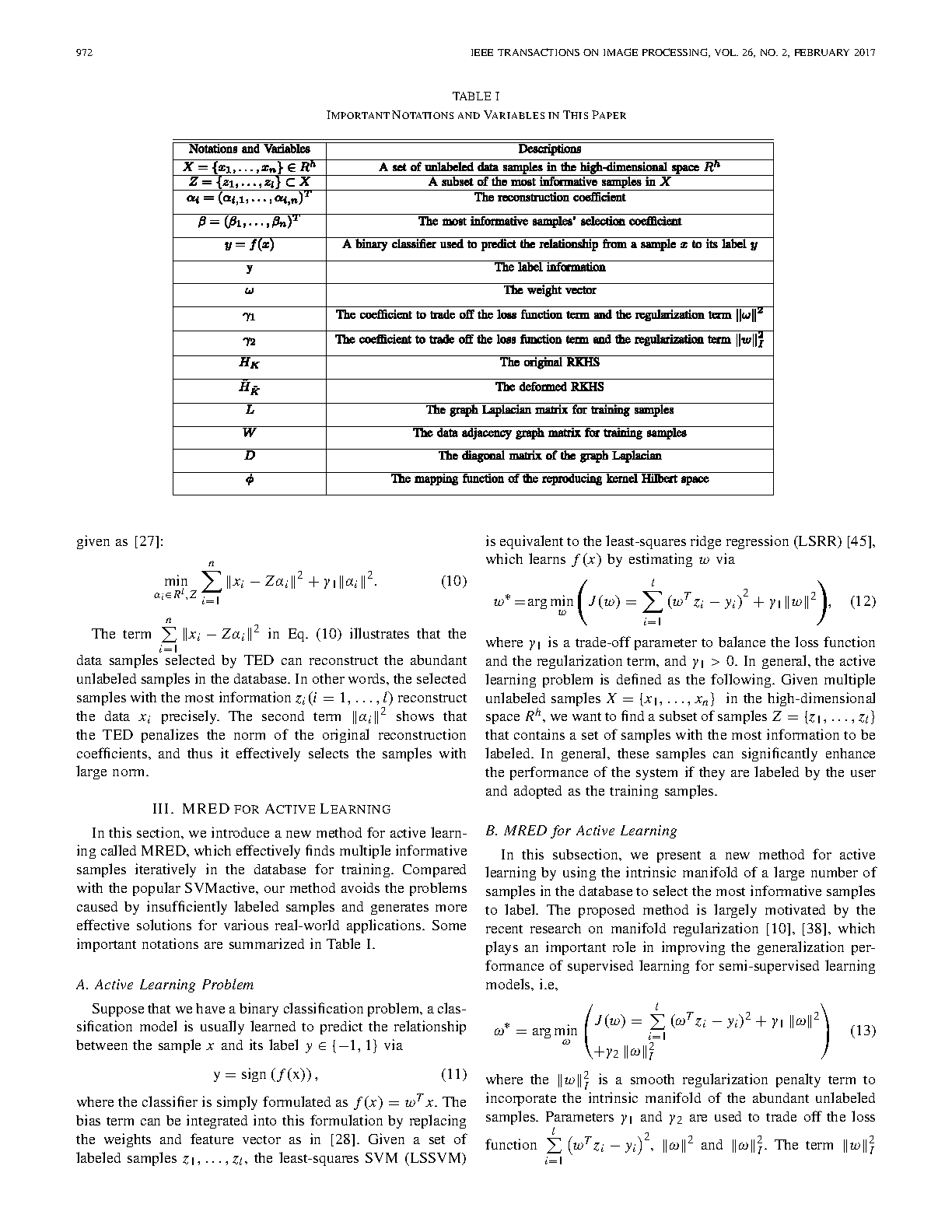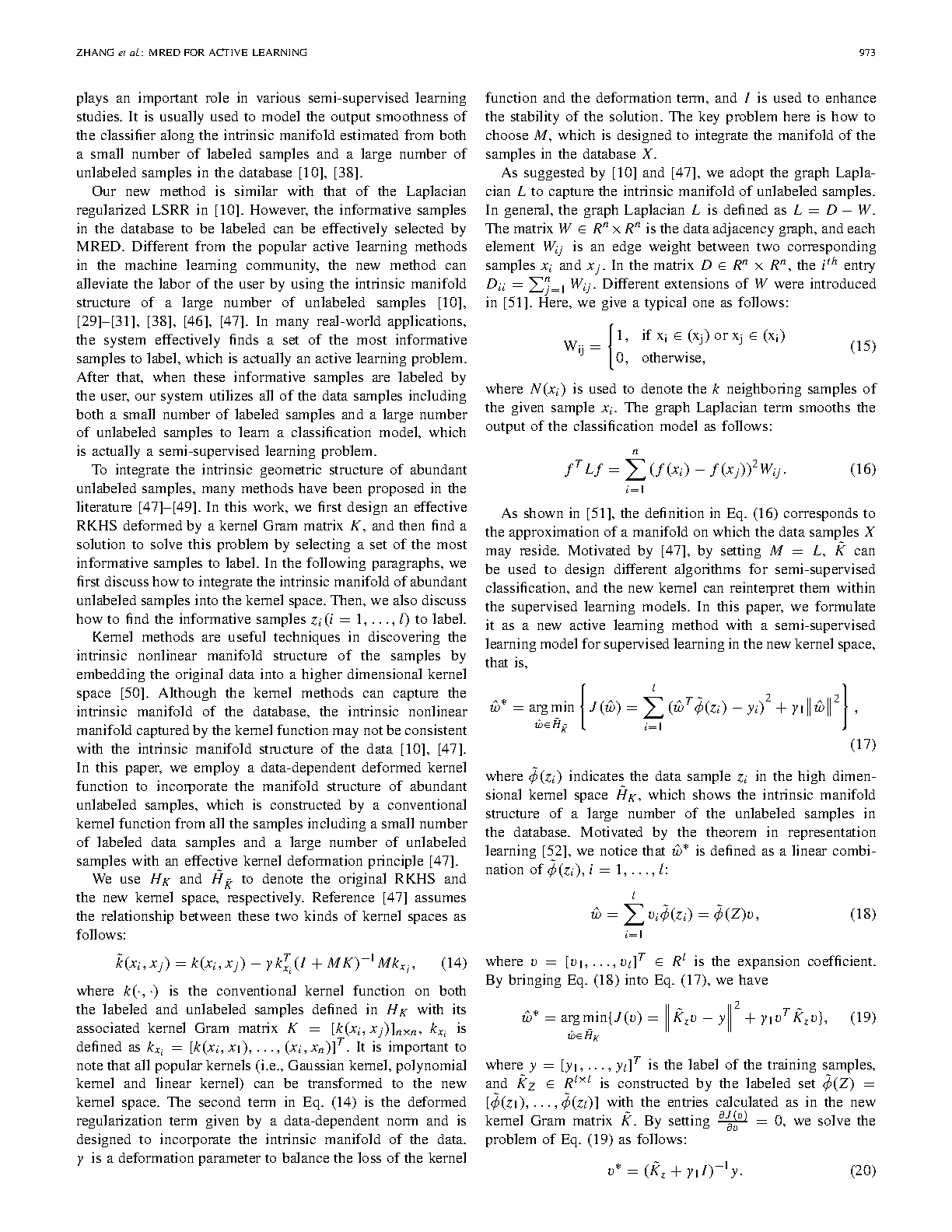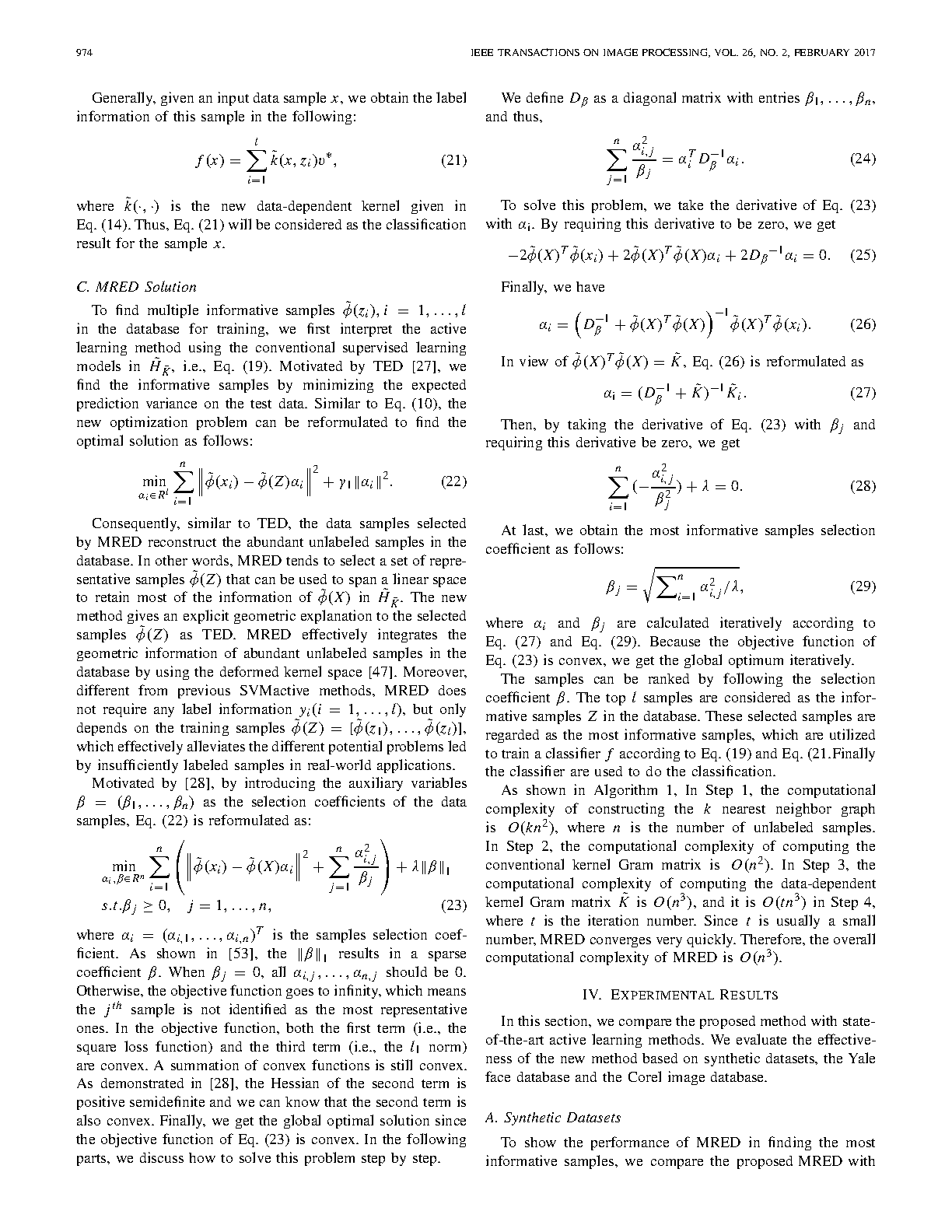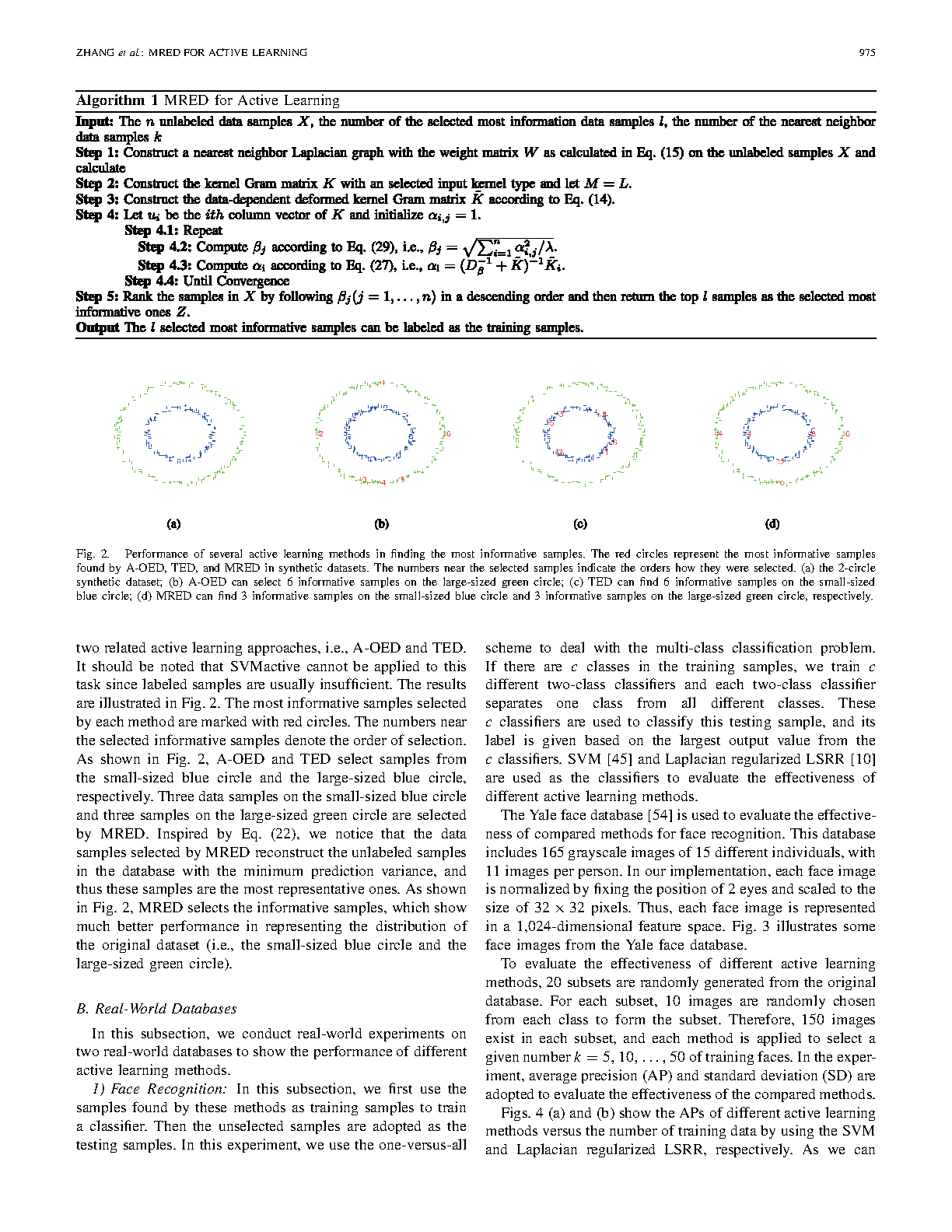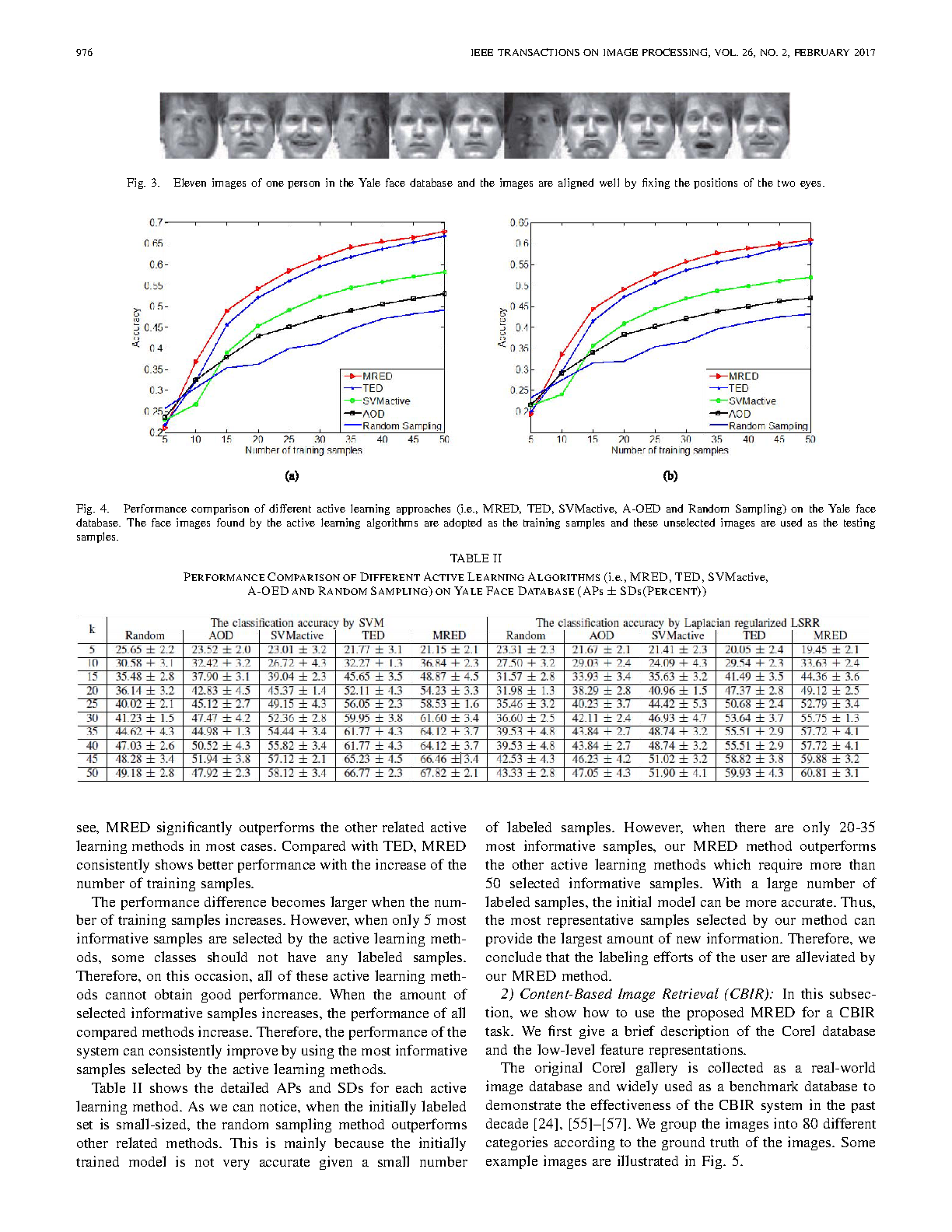Manifold Regularized Experimental Design for Active Learning
Lining Zhang, Hubert P. H. Shum and Ling Shao
IEEE Transactions on Image Processing (TIP), 2017
REF 2021 Submitted Output Impact Factor: 13.7† Top 10% Journal in Computer Science, Artificial Intelligence†

Abstract
Various machine learning and data mining tasks in classification require abundant data samples to be labeled for training. Conventional active learning methods aim at labeling the most informative samples for alleviating the labor of the user. Many previous studies in active learning select one sample after another in a greedy manner. However, this is not very effective because the classification models have to be retrained for each newly labeled sample. Moreover, many popular active learning approaches utilize the most uncertain samples by leveraging the classification hyperplane of the classifier, which is not appropriate since the classification hyperplane is inaccurate when the training data are small-sized. The problem of insufficient training data in real-world systems limits the potential applications of these approaches. This paper presents a novel method of active learning called manifold regularized experimental design (MRED), which can label multiple informative samples at one time for training. In addition, MRED gives an explicit geometric explanation for the selected samples to be labeled by the user. Different from existing active learning methods, our method avoids the intrinsic problems caused by insufficiently labeled samples in real-world applications. Various experiments on synthetic datasets, the Yale face database and the Corel image database have been carried out to show how MRED outperforms existing methods.
Cite This Research
Supporting Grants
EPSRC First Grant Scheme (Ref: EP/M002632/1): £123,819, Principal Investigator
Received from The Engineering and Physical Sciences Research Council, UK, 2014-2016
Project Page
